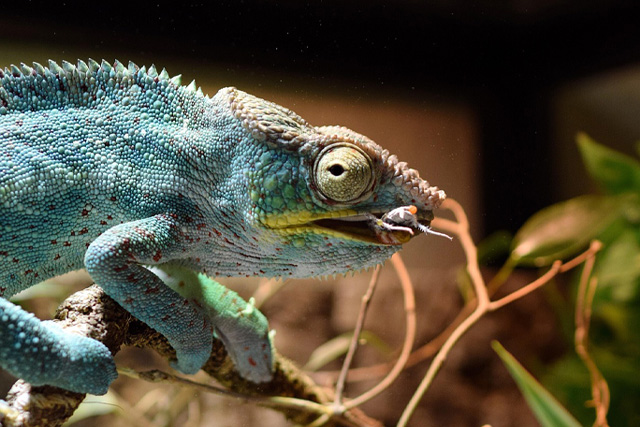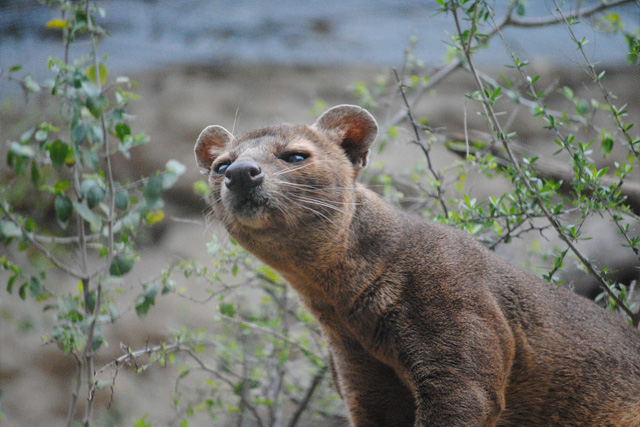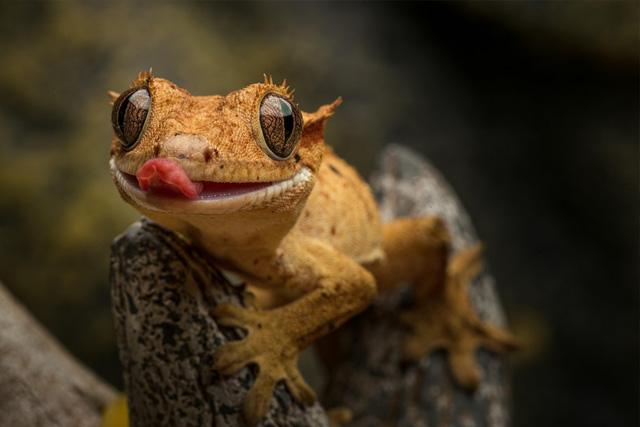Unique Animals in Madagascar You Can Find
Unique Animals in Madagascar You Can Find

Table of Contents
Madagascar is a true paradise for wildlife enthusiasts, home to some of the unique animals in Madagascar that can’t be found anywhere else on Earth. Separated from mainland Africa for millions of years, the island has developed into a biodiversity hotspot, with over 90% of its wildlife being exclusive to this remarkable destination. From the iconic ring-tailed lemurs to the elusive fossa and the vibrant panther chameleon, Madagascar offers a rich variety of unique animals. Whether you’re exploring dense rainforests, spiny deserts, or coastal mangroves, visitors will have the chance to encounter nature’s most extraordinary and rare creatures in their natural habitat.
1. Lemurs
Lemurs are Madagascar’s most iconic creatures, with over 100 species found nowhere else on Earth. From the tiny mouse lemur to the larger indri, whose haunting calls echo through the forest, these primates are a must-see. Andasibe-Mantadia National Park is a top spot to hear the indri’s song, while Ranomafana National Park hosts the golden bamboo lemur. In 2025, new guided lemur treks in Nosy Be include night walks to spot nocturnal species like the mouse lemur. Lemurs are shy, so move quietly during sightings. Learn more about lemur habitats in “Best Places to Visit in Madagascar”. Bring binoculars for better views, and avoid feeding them to protect their natural behavior.
2. Fossa

The fossa, Madagascar’s top predator, looks like a mix between a cat and a mongoose but is related to the civet. This elusive carnivore prowls the forests of Kirindy Reserve, hunting lemurs and small mammals with its sharp claws and agile body. Fossas are solitary and hard to spot, but early morning or late afternoon hikes offer the best chance. In 2025, Kirindy Reserve is launching new fossa tracking tours with expert guides to increase sightings. Males can grow up to 1.8 meters long, including their tail. Discover more predators in “Best Places to Visit in Kenya”. Pack sturdy shoes for forest hikes, and bring a camera with a zoom lens.
3. Aye-Aye
The aye-aye, a nocturnal lemur with an eerie appearance, is one of Madagascar’s strangest animals. Its long, bony middle finger taps on trees to find grubs, which it extracts with rodent-like teeth. With large eyes and bat-like ears, it’s a creature of myth—locals once considered it a bad omen. Spot them in Aye-Aye Island near Mananara or Nosy Mangabe during night walks. In 2025, new night tours in Nosy Mangabe are making aye-aye sightings more accessible for tourists. They’re shy, so keep your distance. Learn about other nocturnal animals in “Best Places to Visit in Tanzania”. Bring a flashlight with a red filter to avoid startling them.
4. Panther Chameleon
The panther chameleon, known for its vibrant colors, is a master of disguise found in Madagascar’s rainforests like Ranomafana and Nosy Be. Males display brilliant hues of red, blue, and green to attract mates, while females are more subdued. They can change color in seconds to blend into their surroundings or signal mood. In 2025, new guided reptile tours in Andasibe are helping visitors spot these chameleons in the wild. They’re arboreal, so look up in the trees during hikes. Explore more reptiles in “Best Places to Visit in Namibia”. Bring a macro lens for close-up photos, and avoid touching them to prevent stress.
5. Tomato Frog
The tomato frog, named for its bright red-orange color, looks like a squishy fruit but secretes a sticky substance to deter predators. Found in the wetlands of eastern Madagascar, like Maroantsetra, these frogs are most active after rain. Their vivid hue warns predators of their toxicity, though they’re harmless to humans. In 2025, new eco-tours in Maroantsetra include frog-spotting walks, focusing on the tomato frog and other amphibians. They’re nocturnal, so evening hikes offer the best chance to see them. Discover more amphibians in “Best Places to Visit in Madagascar”. Wear waterproof boots for muddy trails, and bring a flashlight for night walks.
6. Giraffe Weevil
The giraffe weevil, a tiny insect with a long neck, is a quirky resident of Madagascar’s rainforests, particularly in Ranomafana National Park. Males use their extended necks to fight for mates, while females use them to roll leaves into tubes for egg-laying. Their bright red and black bodies make them easy to spot on green leaves. In 2025, new macro photography tours in Ranomafana are helping visitors capture close-ups of these unique weevils. They’re most active during the wet season (November to March). Learn about other insects in “Best Places to Visit in Botswana”. Bring a magnifying glass to appreciate their details, and wear light clothing for humid forest hikes.
7. Leaf-Tailed Gecko

The leaf-tailed gecko, a master of camouflage, blends seamlessly into Madagascar’s forests with its leaf-like tail and mottled skin. Found in parks like Andasibe-Mantadia and Masoala, these geckos cling to tree trunks, making them tricky to spot—look for their large, lidless eyes. They’re nocturnal hunters, feeding on insects under the cover of darkness. In 2025, new night hikes in Masoala National Park will help tourists spot these elusive geckos. Some species, like the Uroplatus phantasticus, have tails that mimic decaying leaves. Explore more camouflaged creatures in “Best Places to Visit in Mozambique”. Bring a flashlight with a red filter, and move slowly to avoid scaring them.
Madagascar Hissing Cockroach
The Madagascar hissing cockroach, one of the largest cockroaches in the world, is a fascinating insect that can grow up to 7.5 cm long. Found in the forests of Madagascar, like those in Andasibe, it’s known for the hissing sound it makes by expelling air through its breathing holes—a defense mechanism and mating call. They’re harmless scavengers, feeding on decaying plants. In 2025, new educational tours in Antananarivo’s insect parks will let visitors handle these cockroaches and learn about their role in the ecosystem. They’re often kept as pets due to their docile nature. Discover more unique insects in “Best Places to Visit in Madagascar”. Wear gloves if handling them, and bring a camera for close-ups.
Tenrec
Tenrecs, small mammals endemic to Madagascar, look like a mix between a hedgehog and a shrew but are unrelated to either—they’re a unique evolutionary branch. Found in forests like Ranomafana and Andasibe, some species, like the lowland streaked tenrec, have spiky yellow and black stripes, while others, like the tailless tenrec, resemble tiny rodents. They’re nocturnal and forage for insects and small vertebrates. In 2025, new night walks in Ranomafana National Park are helping visitors spot these elusive creatures. Tenrecs can curl into a ball for defense, much like a hedgehog. Learn about other small mammals in “Best Places to Visit in Zambia”. Bring a flashlight for night hikes, and watch your step to avoid startling them.
Sifaka
The sifaka, a type of lemur, is known for its graceful, sideways hopping when on the ground, a sight that’s both amusing and mesmerizing. Found in parks like Berenty Reserve and Isalo National Park, the Verreaux’s sifaka has a white coat with a brown cap, while the diademed sifaka boasts golden-orange hues. They leap between trees with ease, feeding on leaves and fruit. In 2025, new guided tours in Berenty Reserve include sifaka-watching sessions with expert spotters. They’re most active in the early morning, so plan your visit accordingly. Discover more lemurs in “Best Places to Visit in Madagascar”. Bring binoculars for treetop sightings, and wear light clothing for warm days.
Best Places to Spot Wildlife in Madagascar in 2025
Madagascar’s diverse ecosystems make it a wildlife haven. Andasibe-Mantadia National Park is a top spot for lemurs like the indri and aye-aye, with new night walks in 2025 enhancing sightings. Ranomafana National Park hosts the golden bamboo lemur, tomato frog, and giraffe weevil—its new macro photography tours are perfect for close-ups. Kirindy Reserve is ideal for fossa tracking, while Nosy Mangabe offers aye-aye sightings during night hikes. Nosy Be’s 2025 wildlife festival in September includes lemur treks and marine tours to spot turtles. Berenty Reserve is great for sifakas, and Masoala National Park excels for leaf-tailed geckos. Plan your wildlife adventure with “Madagascar Travel Guide”. Hire a local guide for the best chances of spotting these creatures.
Conservation Efforts for Madagascar’s Unique Animals
Madagascar’s wildlife faces threats from deforestation and habitat loss, but conservation efforts are making a difference. The Durrell Wildlife Conservation Trust works to protect lemurs in Andasibe, while the Madagascar Fauna and Flora Group focuses on breeding programs for species like the tomato frog. In 2025, new community-led projects in Nosy Be are training locals as eco-guides, supporting both wildlife and livelihoods. Reforestation initiatives in Ranomafana are helping restore habitats for the fossa and giraffe weevil. You can support these efforts by choosing eco-friendly tours and avoiding souvenirs made from animal products. Learn about conservation in “Best Places to Visit in Kenya”. Donate to local NGOs or volunteer with wildlife projects to make an impact.
Conclusion
Madagascar’s wildlife is truly one-of-a-kind. Whether you’re trekking through rainforests or exploring national parks, keep an eye out for these amazing creatures that call this island home. Check out our Best Places to Visit in Madagascar and Madagascar Travel Guide to plan your adventure.


